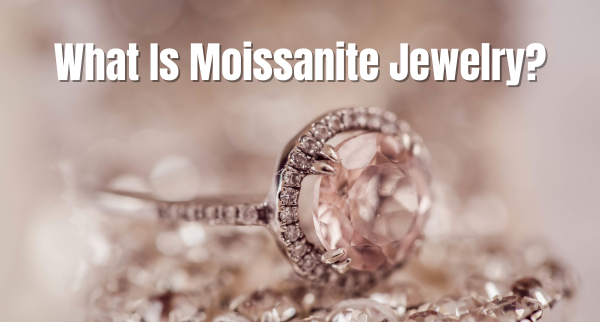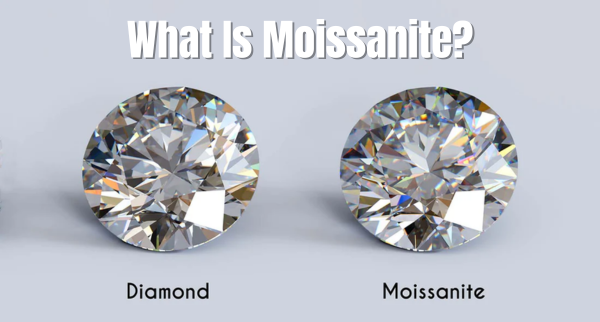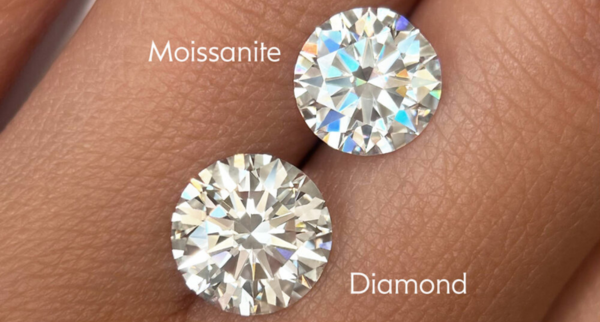
Engagement rings have been a timeless symbol of love, commitment, and upcoming marriage for thousands of years. In ancient Rome, women wore rings made of materials like ivory and iron to signify mutual love and devotion.
However, it wasn’t until the 20th century that diamonds became a universal status symbol and the norm for engagement rings. Prior to this, diamonds were seen as rare but not necessarily essential for proposals. Engagement rings often featured a variety of precious stones, with sapphires and rubies being particularly favoured for their vibrant colours and symbolism.
The shift towards diamonds dominating the engagement ring market didn’t happen by chance. In the late 1930s, as demand for diamond rings declined in the U.S., the De Beers Mining Company launched a transformative marketing campaign with the slogan “A Diamond is Forever.” The company used photographs of famous movie stars swathed in diamonds to associate the gemstone with glamour and prestige. This campaign not only revived the diamond industry but also transformed diamonds into a cultural symbol of everlasting love, making them synonymous with engagement rings.
While diamonds are undeniably beautiful, elegant, and fashionable, they often come with ethical concerns. Inhumane mining practices and environmental devastation have cast a shadow over the diamond industry.
The good news? Today, we have alternatives that are just as stunning while also being conflict-free, environmentally friendly, and less commercialized than natural diamonds. One such alternative is moissanite, a gemstone that rivals diamonds in beauty and durability.
In this article, we’ll explore the traditional diamond vs. moissanite, comparing their similarities, differences, and the unique advantages that moissanite offers. You’ll also learn why this extraordinary gemstone has become an increasingly popular choice for those seeking a fair and responsible engagement ring that doesn’t compromise on luxury or quality.
What is Moissanite?

With its popularity rising quickly, chances are you’ve heard of this gorgeous gemstone. But what is a moissanite gemstone exactly? Moissanite is a naturally occurring mineral composed of silicon carbide. It closely resembles a mined diamond in appearance, brilliance, and fire. Its incredible resemblance to diamonds, combined with its unique optical properties, makes moissanite a popular choice for engagement rings.
Moissanite engagement rings come in a variety of styles, from classic Solitaire settings to intricate Halo designs or vintage-inspired yellow gold settings, ensuring there’s something to suit every individual’s preferences.
One of the most significant advantages of moissanite rings compared to diamond rings is their affordability and ethical sourcing. Because moissanite is usually lab-created and requires no mining, these rings offer an eco-friendly and sustainable alternative to traditional diamond rings.
Key Features of Moissanite
Moissanite stands out due to its exceptional qualities. Let’s take a closer look at its key features.
1. Brilliance and Fire
Moissanite is known for its dazzling sparkle. It refracts light differently from diamonds, creating a rainbow-like effect known as “fire.” This unique brilliance makes moissanite jewellery stand out in any lighting.
2. Durability
Moissanite has a Mohs hardness rating of 9.25, making it one of the hardest gemstones after diamonds. This means it is highly resistant to scratches and suitable for daily wear.
3. Eco-Friendly
Unlike diamonds, moissanite is grown in laboratories. This process avoids the environmental damage and ethical concerns often associated with diamond mining. Choosing moissanite supports sustainability and ethical practices.
4. Affordability
Moissanite offers luxury without breaking the bank. It costs significantly less than diamonds while providing a similar level of elegance and beauty.
Moissanite vs. Diamond? What’s the Difference?

While moissanite and diamonds look similar, they have some key differences. Let’s compare the two gemstones.
1. Brilliance
Moissanite has a higher refractive index than diamonds, which means it sparkles more. While diamonds have a subtle brilliance, moissanite creates a more colourful sparkle.
2. Durability
Diamonds are the hardest gemstone with a Mohs rating of 10, while moissanite is slightly lower at 9.25. However, moissanite is still hard enough to withstand daily wear and tear.
3. Cost
Moissanite is much more affordable than diamonds, making it a great option for those who want stunning jewellery without overspending.
Types of Moissanite Jewelry?
Moissanite is versatile and can be used in various types of jewellery. Here are some popular options:
1. Moissanite Rings
- Engagement rings: Moissanite is a popular choice for engagement rings due to its sparkle and affordability.
- Wedding bands: Many couples prefer moissanite wedding bands as a sustainable and cost-effective option.
2. Moissanite Earrings
- Studs: Moissanite studs are simple yet elegant and perfect for daily wear.
- Hoops: Add a touch of glamour with moissanite hoop earrings.
- Danglers: These make a bold statement and are perfect for special occasions.
3. Moissanite Necklaces and Pendants
- Solitaire pendants: A single moissanite stone on a chain makes a timeless piece.
- Statement necklaces: Perfect for parties or weddings, these feature multiple moissanite stones.
4. Moissanite Bracelets
- Tennis bracelets: Moissanite tennis bracelets are a classic accessory for any outfit.
- Custom styles: Moissanite can be customised into unique bracelet designs.
Why Choose Moissanite Over Diamonds?
When deciding between a moissanite or diamond engagement ring, the choice often depends on personal preferences, budget, and ethical considerations. Here are some compelling reasons why more people are celebrating their love with conflict-free, eco-friendly moissanite gemstones.
- Affordability
A major difference between moissanite and diamond rings is their price. Moissanite wedding rings cost significantly less than diamond rings of comparable size and quality. This allows couples to invest in a stunning piece of jewellery without exceeding their budget.
- More Sparkle
Moissanite rings have a higher refractive index than diamonds, resulting in exceptional brilliance and fire. Side-by-side, moissanite gemstones often sparkle more than diamonds, giving you a radiant look at a fraction of the cost.
- Long-Term Value
Moissanite offers excellent long-term value due to its durability and resistance to scratches, chips, and damage. This makes it an ideal choice for daily wear, ensuring your ring looks as stunning as the day you received it.
- Sustainability and Ethics
Moissanite is sustainably grown in laboratories, avoiding the environmental destruction often linked to natural diamond mining. It is also free from the ethical issues surrounding conflict diamonds and human rights violations. By choosing moissanite, couples can celebrate their love with a clear conscience, knowing their ring is both eco-friendly and responsibly sourced.
- Versatile Styles
Moissanite engagement rings come in various shapes and settings, from classic round cuts to elegant ovals. Oval moissanite, in particular, is prized for its timeless elegance and the way its elongated shape enhances its sparkle, making it a favourite among modern couples.
Tips for Buying Moissanite Jewelry?
Buying moissanite jewellery is simple if you know what to look for. Here are some tips to guide you:
1. Choose a Reputable Seller
Buy from trusted jewellers who specialise in moissanite. Look for reviews and certifications to ensure quality.
2. Focus on the 4Cs
Just like diamonds, moissanite is graded based on cut, carat, clarity, and colour. Choose a gemstone with a brilliant cut and high clarity for maximum sparkle.
3. Look for Certifications
Make sure the moissanite you purchase comes with certifications verifying its quality and origin.
Care and Maintenance?
Moissanite is easy to maintain, but proper care ensures it stays sparkling for years.
1. Cleaning Tips
- Use a soft cloth, warm water, and mild soap to clean your moissanite jewellery.
- Avoid harsh chemicals or abrasive materials that can damage the metal setting.
2. Proper Storage
- Store your jewellery in a soft pouch or jewellery box to avoid scratches.
- Keep moissanite pieces separate from other jewellery to prevent damage.
3. Regular Check-Ups
- Have your jewellery inspected by a professional jeweller every 6-12 months to ensure the settings are secure.
Where to buy the Best Moissanite Jewelry for Yourself or Others?
When it comes to buying moissanite jewelry, whether for yourself or as a gift for a loved one, choosing the right place is important. You want a trusted brand that delivers quality, beauty, and value.
At Valentina Rings, we specialise in high-quality moissanite jewelry designed for every occasion. Whether you’re looking for moissanite engagement rings, necklaces, earrings, or wedding bands, our collection offers timeless pieces that shine brilliantly without the hefty price tag of traditional diamonds.
Why Choose Valentina Rings for Moissanite Jewelry?

- Exceptional Quality: Our moissanite stones are handpicked and crafted with precision to ensure unmatched sparkle and brilliance.
- Affordable Luxury: You can get stunning, high-quality jewelry at a fraction of the cost of diamonds.
- Variety of Styles: From classic to modern designs, we have something for every style and occasion.
- Ethical and Sustainable: Moissanite is a lab-created stone, making it an eco-friendly and ethical choice.
Conclusion: What Is Moissanite Jewelry
Moissanite jewellery is a brilliant, durable, and ethical alternative to traditional gemstones. Whether you’re looking for an engagement ring, earrings, or a necklace, moissanite offers unmatched sparkle and value.
If you’re considering adding a new piece of jewellery to your collection, explore the wide range of moissanite options available today. Its beauty, affordability, and sustainability make it a perfect choice for anyone.
Discover your dream moissanite jewellery and elevate your style with timeless elegance!
